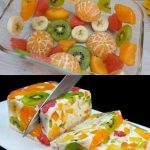In an era where much of our food is pre-packaged and ready to eat, checking the freshness of groceries, especially something as essential as eggs, often takes a backseat. Eggs are a staple in many recipes, offering versatility and nutrition, but using a bad egg can not only ruin your dish but may also pose a health risk. As more people embrace home cooking and rediscover traditional methods, effective ways to test egg freshness are gaining attention. One such method comes from Nana—a simple yet foolproof trick passed down through generations. Let’s dive into this easy technique that ensures your eggs are always at their freshest.
The Importance of Egg Freshness
Fresh eggs are crucial not only for better culinary results but also for safety. Fresh eggs have superior texture, taste, and nutritional value compared to older ones. In baking, they contribute to better structure and rise. Consuming stale or spoiled eggs can lead to foodborne illnesses like salmonella, making it essential to tell the difference between fresh and aged eggs. Understanding the significance of egg freshness helps you avoid kitchen mishaps and health risks.
Nana’s Simple Trick for Testing Egg Freshness
Nana’s egg freshness test is wonderfully straightforward and requires no fancy tools—just a bowl of water. This age-old method works by observing how the egg behaves when submerged in water, based on natural changes that occur inside the egg over time. As eggs age, the small air pocket inside grows, which can be easily detected through this water test.
Step-by-Step Guide to Nana’s Egg Freshness Test
see continuation on next page













